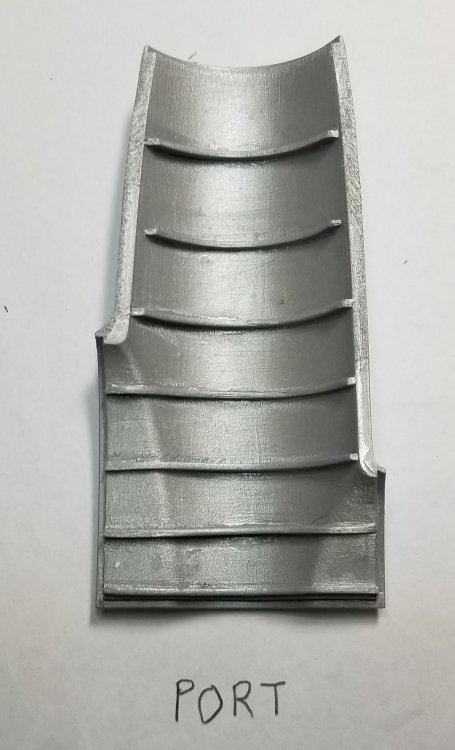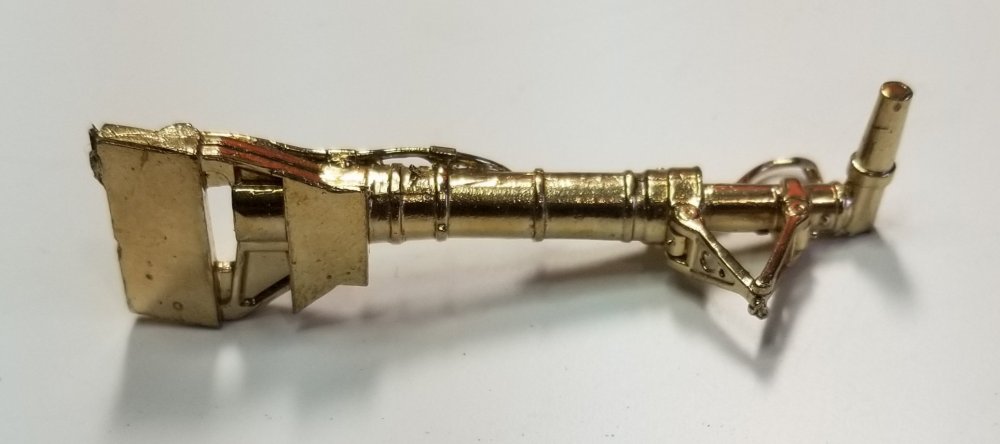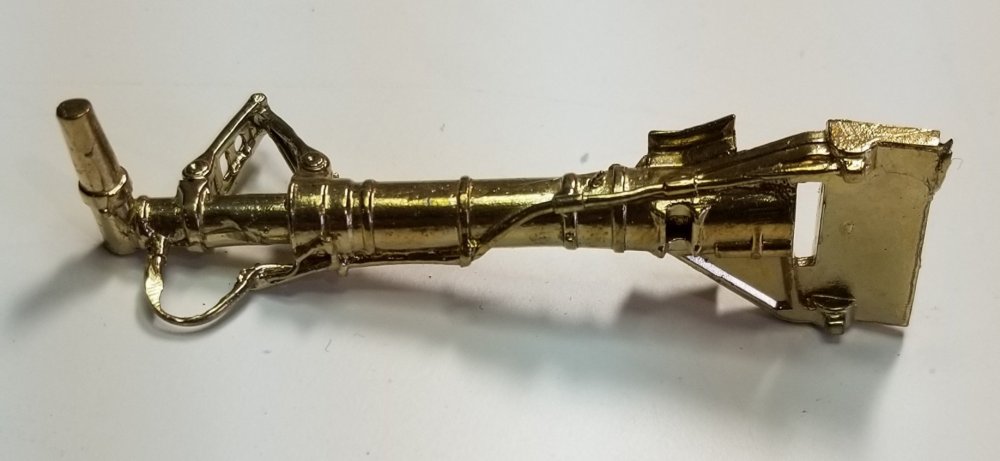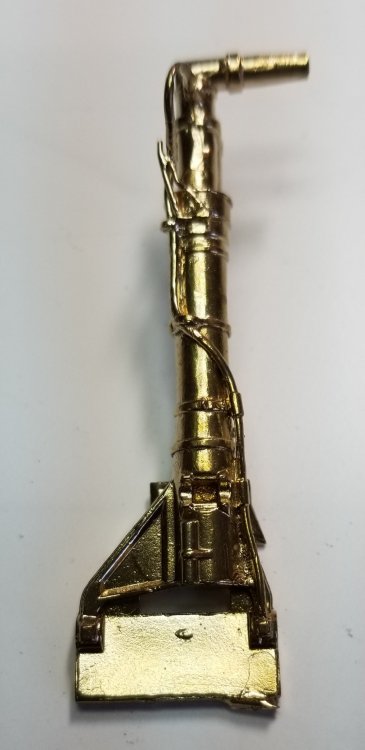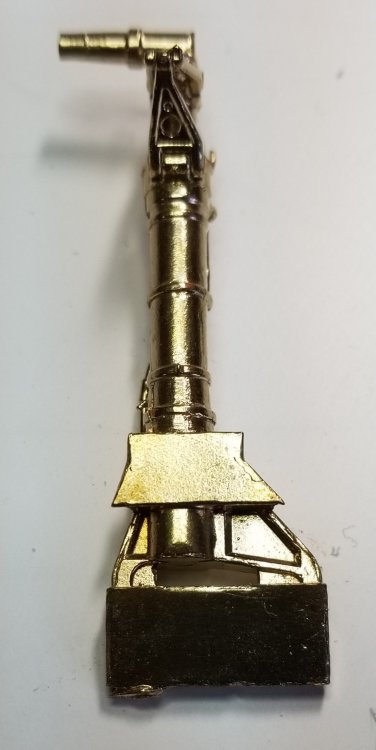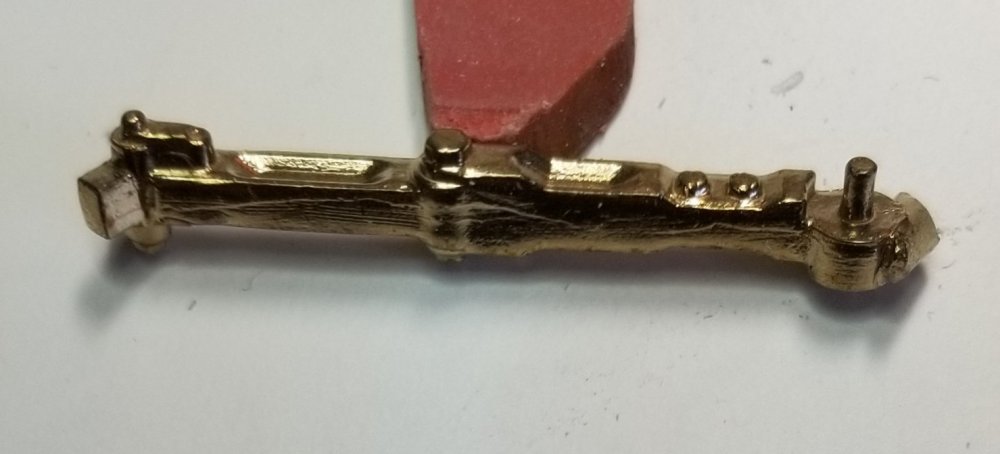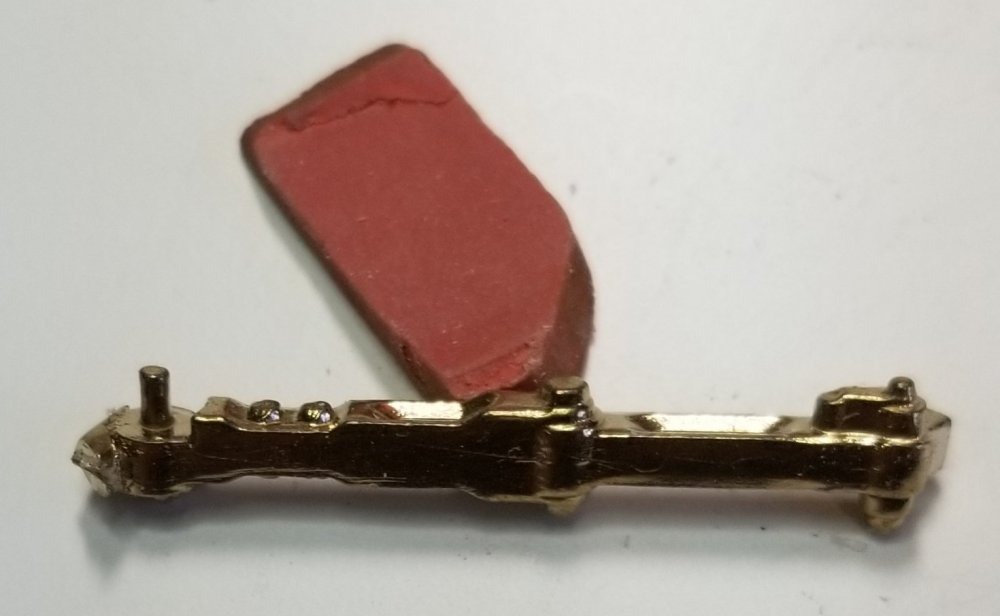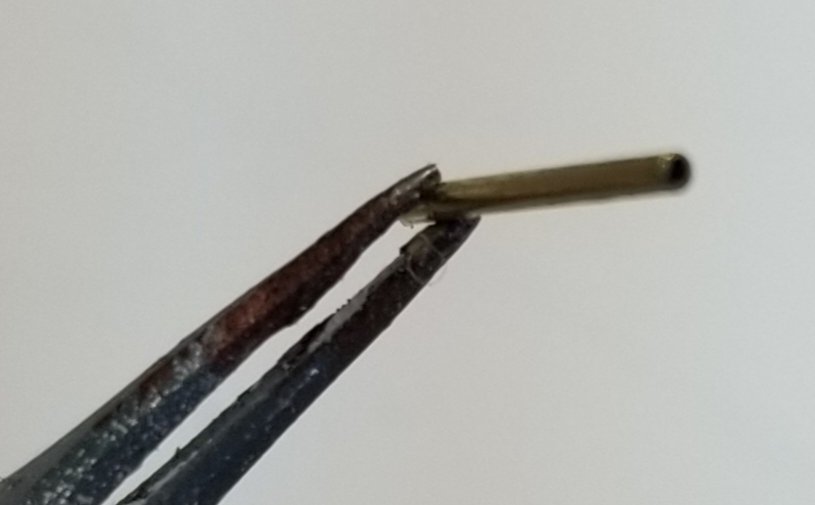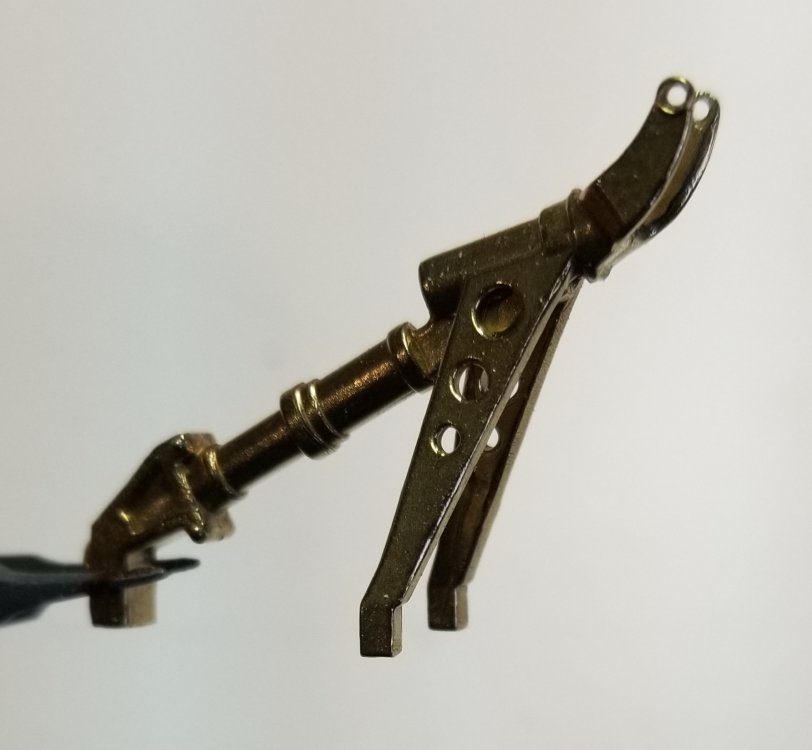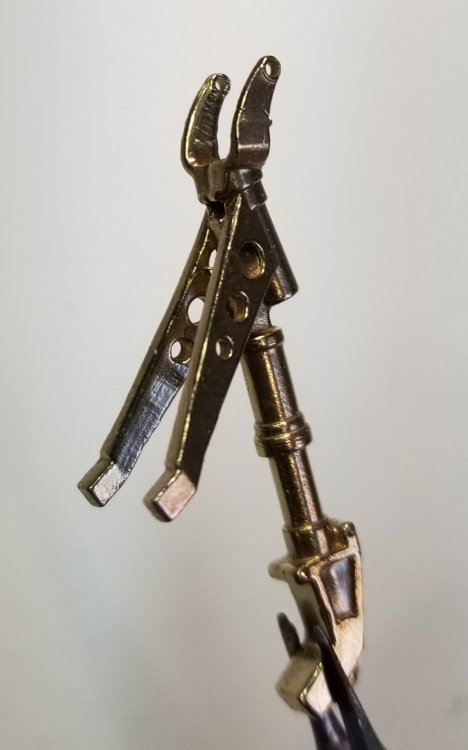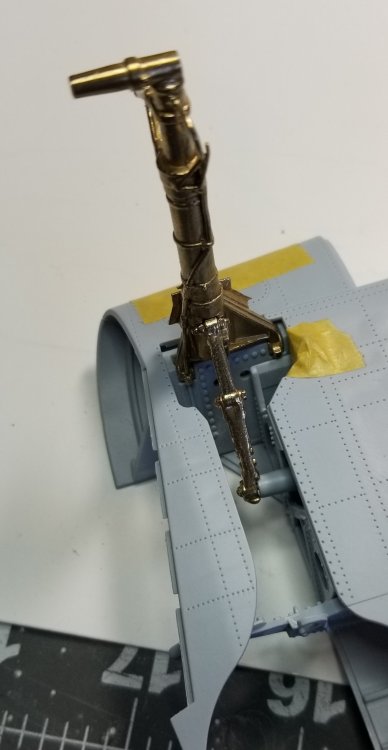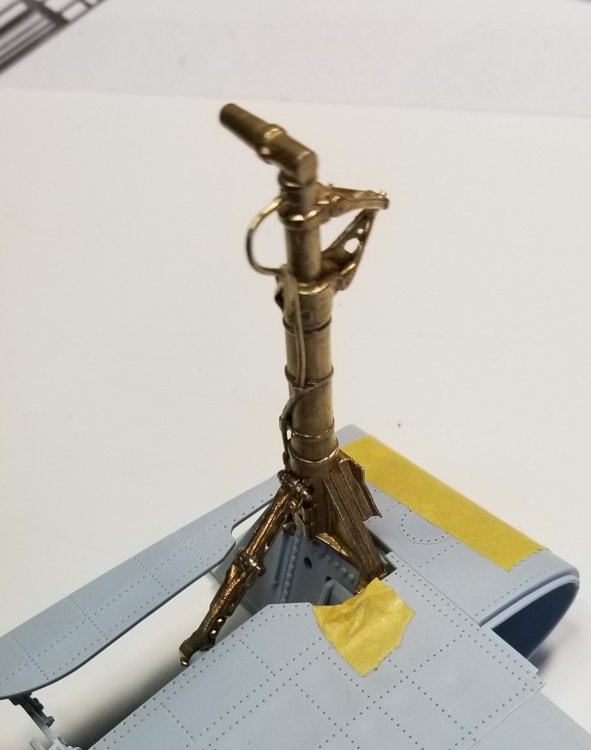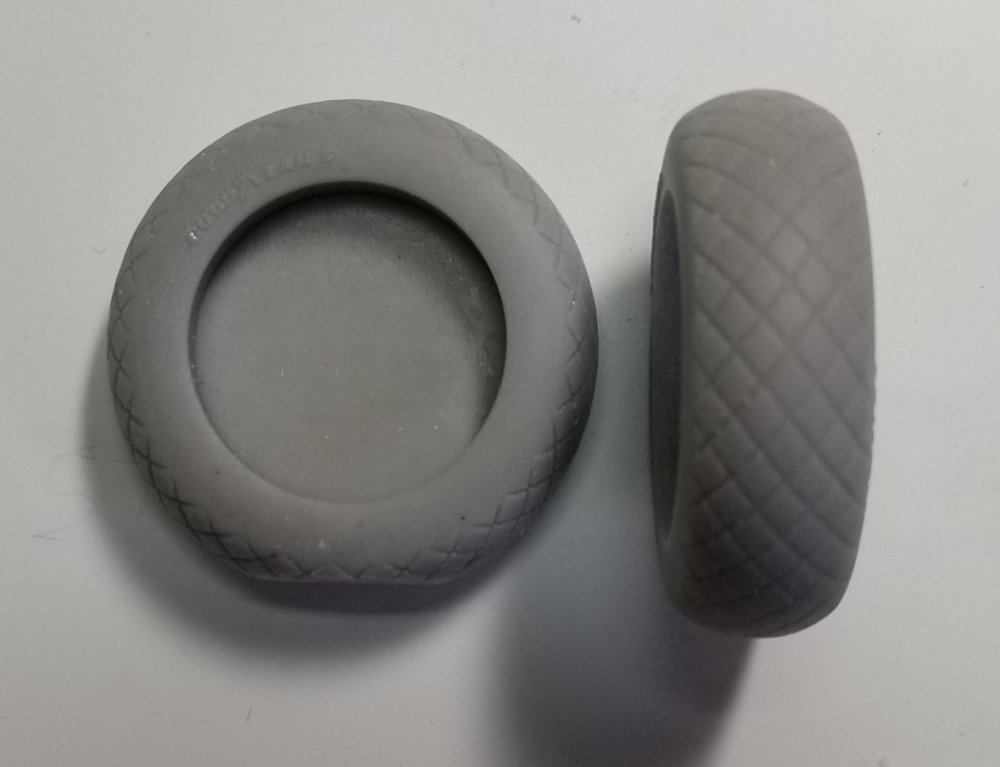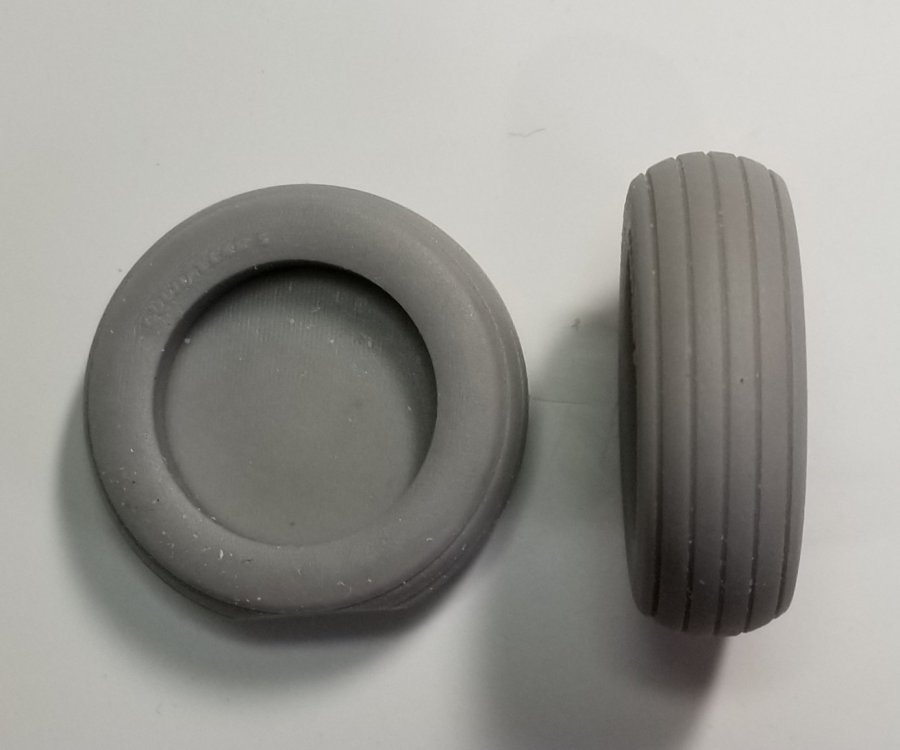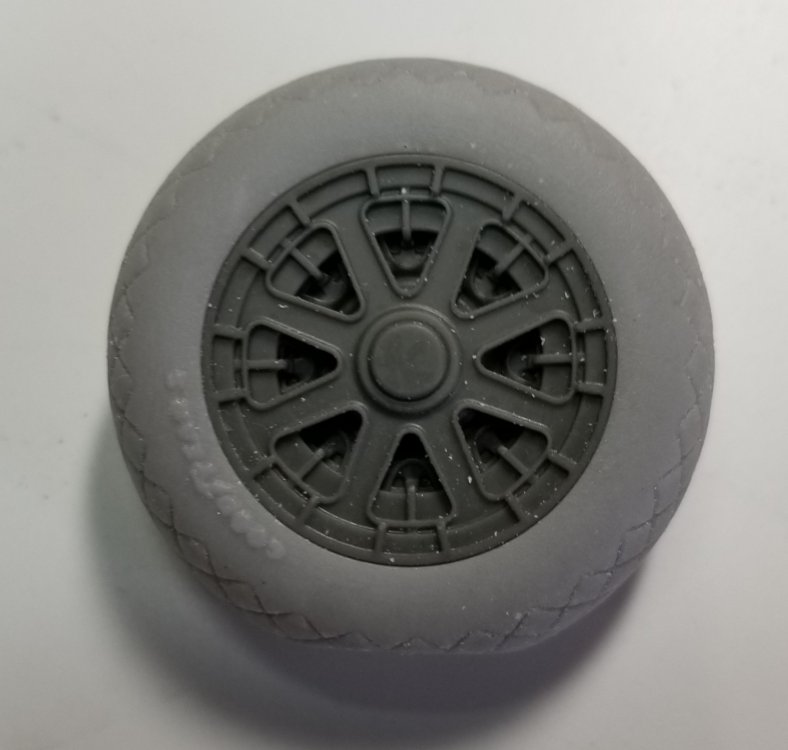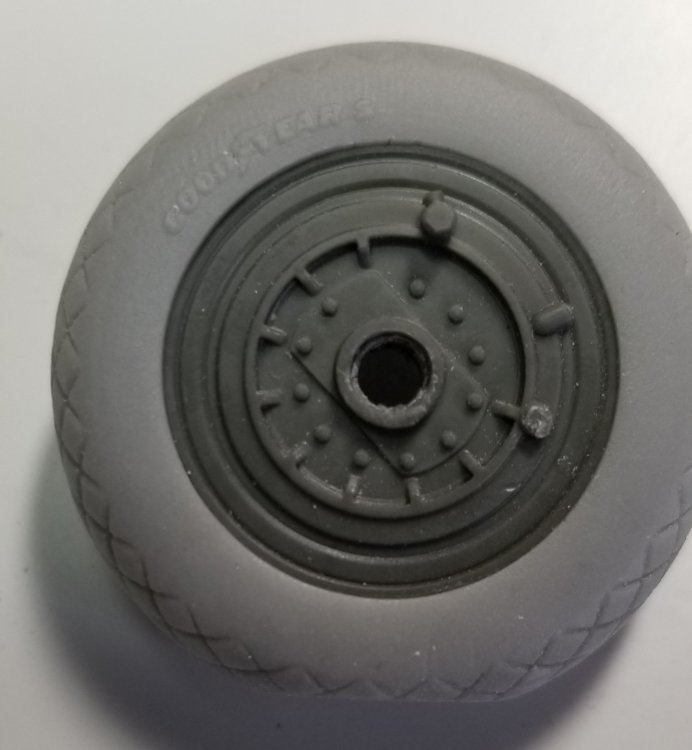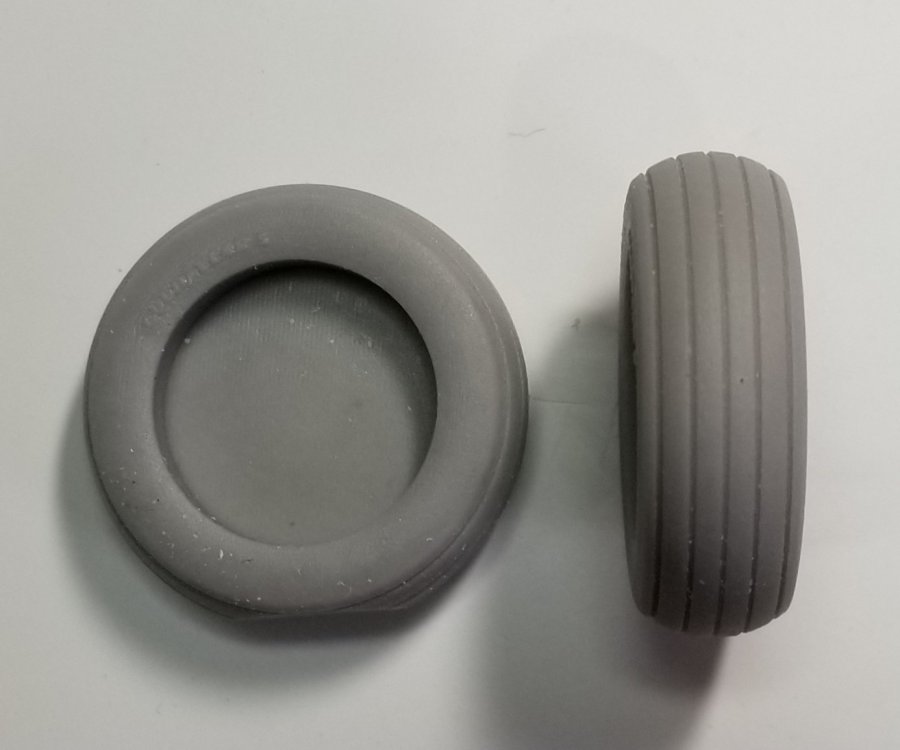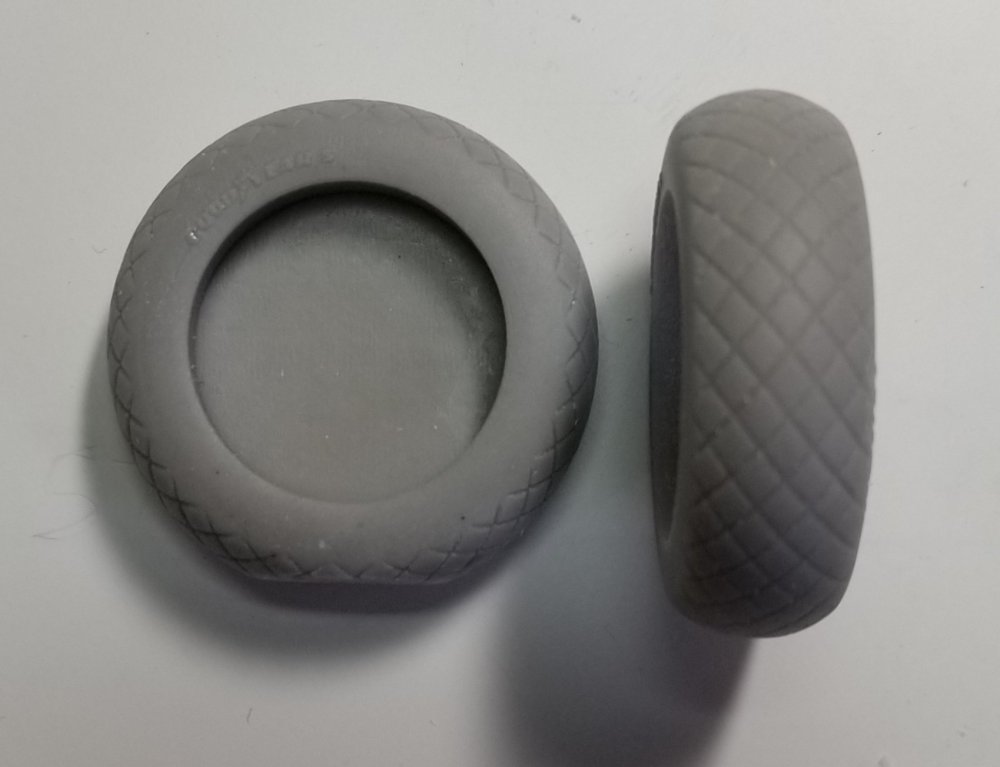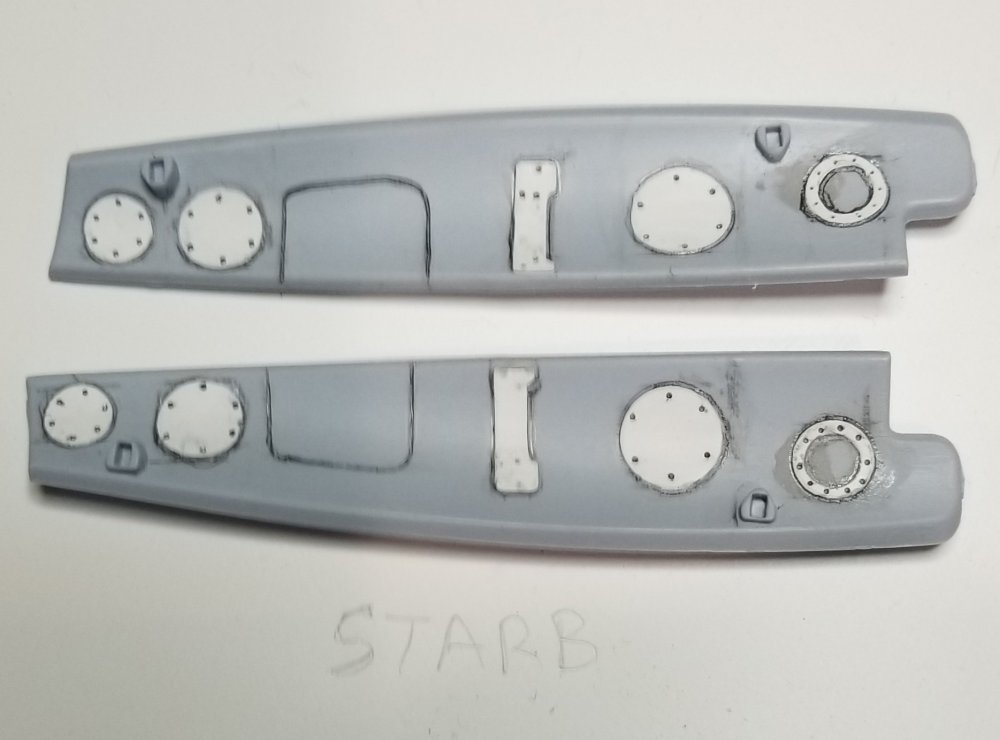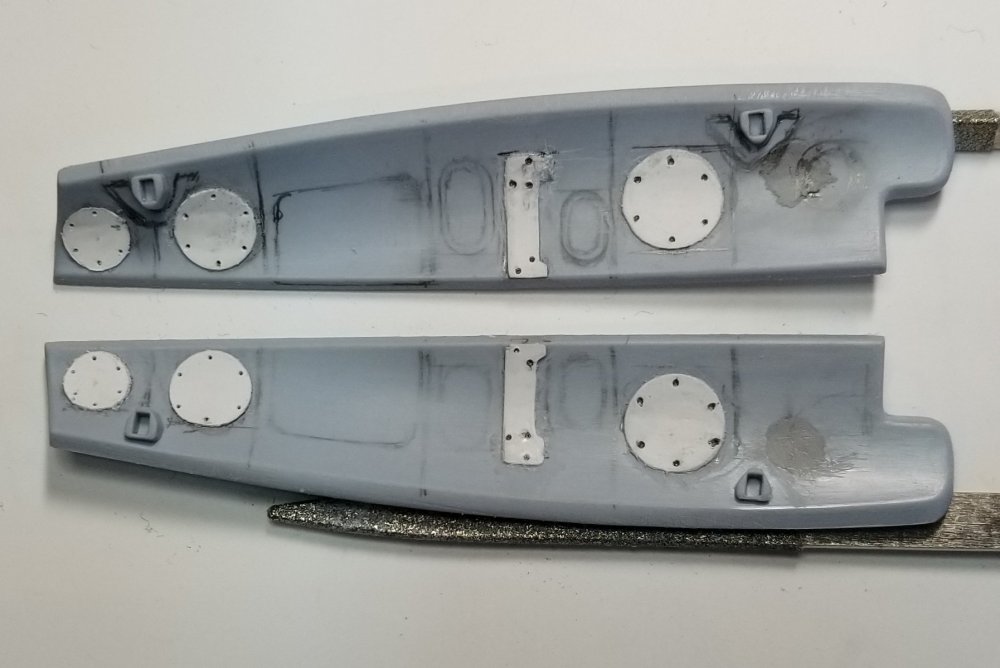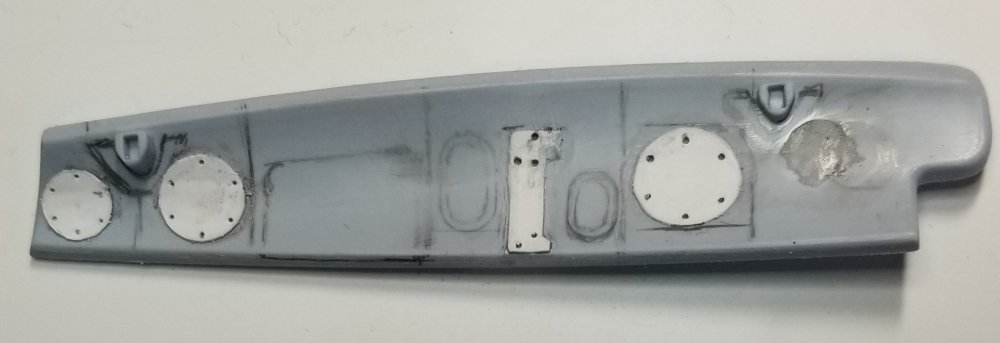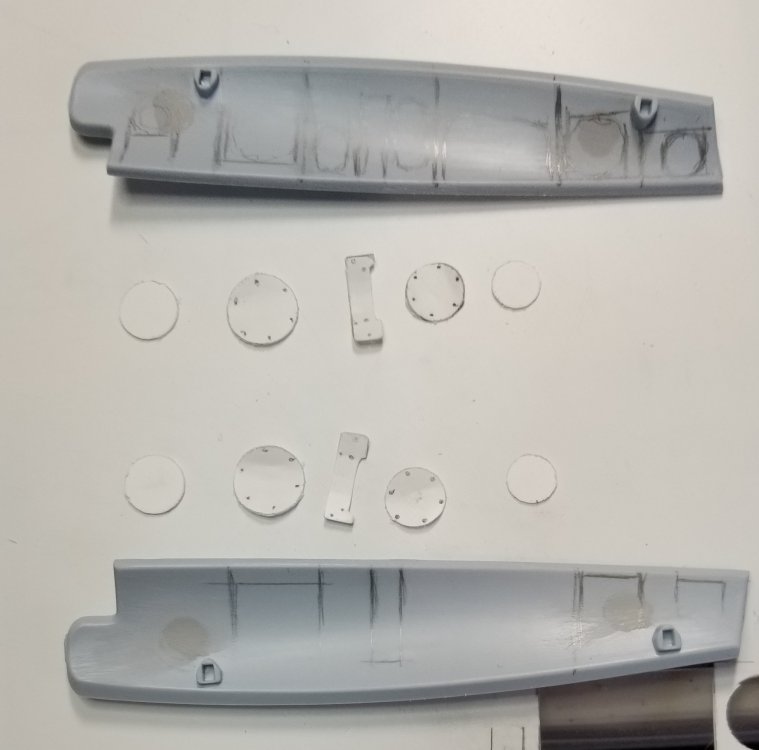-
Posts
1,350 -
Joined
-
Last visited
Content Type
Profiles
Forums
Events
Gallery
Everything posted by CrankyCrafstman
-
Just a small update. Thanks to Anthony in NZ for supplied pictures. this is a picture of the top engine cover on the Mosquito. these are the kit parts. The Starboard one is the why it comes in the kit. The Port one is after I modified it to look like the one in the photo. this is it after painting it with Vallejo metal colors dull aluminum. It still needs some clean up and weathering, but I ran out of umff, so more later when I have recharged the old body. Ron G
-
Hey Hubert Your going to love that new Infinity. When I got mine, just recently, with the 0.2mm needle installed I mixed up some Vallejo model air and could paint 1/2 mm lines like I was drawing with a pencil! My Paasche Raptor couldn't even come close. Ron G
-
Hey captain I'm using the ones from ANYZ. He makes a complete kit for the 1/24 Hellcat. Mine will be a US Navy plane probably a late 3 that had the up dated canopy. I believe you can get the Gaspatch guns in, but I would have to pull mine off the shelf and do some investigating, as I'm in the middle of my 1/24 Mosquito. Ron G
-
-
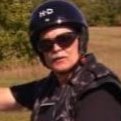
Tamiya Mossie build resumed
CrankyCrafstman replied to JohnB's topic in LSM 1/35 and Larger Work In Progress
Hey John I'll bet you will have it done before I finish my 1/24 Mossie. ...I'll be following along for the ride. Ron G -
Thanks guys
-
Hey guys I almost forgot to let you guys know that Piotr at Master Model's has two new sets for the 1/24 Hellcat. An early set for the F6F-3 Hellcat, barrels with cooling holes unshrouded set# am-24-018 and set# am-24-019 shrouded barrels for the F6F-5. They don't show on his site yet but they should be available in a week or so. So keep a look out and get a set they will make a big difference to the look of your model. Ron G
-
Just got this for my birthday. harder_and_steenbeck_infinity_CR_plus_2in1_by_spraygunner__76194.1523118103.webp What a difference a quality airbrush makes. I sprayed some Vallejo grey/green for a test. I made some 1/2 mm lines like I was drawing with a pencil WOW! I could never do that with my Paasche talon or raptor, and easy to clean. I'm really impressed and now I can't wait to start paint on my 1/24 Mossie build. Ron G
-

F4U-1A finished!
CrankyCrafstman replied to JohnB's topic in LSM 1/32 and Larger Aircraft Ready for Inspection
Thanks John I'll look into that. Ron G -

F4U-1A finished!
CrankyCrafstman replied to JohnB's topic in LSM 1/32 and Larger Aircraft Ready for Inspection
Great build John So I thought I would ask the ranking Corsair guru a few questions. First I have a Tamiya F4U-1A that I would like to do as Boyingtons bird. My question is what color was the rear wheel well area samon or zink chromate? What color was the cockpit? What color were the main wheel wells? Any other info that you can provide would be greatly appreciated. Ron G -
I have a really great wife, she got me a H&S Infinity plus 0.2mm/0.4mm with both cups, thanks babe Ron G
-
LMAO
-
Thanks guys
-
Hey Ernie do they make mr surfacer 500 in flesh tone? Ron G
-
Glad to see you made it through surgery Carl. Know relax as best you can and get well soon all our best. Ron G
-
Hey Bir All my best, from a 6 year out liver transplant patient Ron G
-
Hey Ernie In the imortal words of Winston Churchill " keep buggering on old man" Ron G
-
Well guess what showed up today in the mail. That's right the two sets of landing gear, doors and tires from Alistair at Aerocraft. These are real works of art the doors are very thin, so be careful, they are very delicate I broke a piece off of one, but recovered it and it is now fixed. The landing gear legs have the brake line cast on, but they are real done well. Well here are some pictures. view showing scissor links here is one complete set. This is the diamond tread pattern that will be used on this (F6F-3) build. I have another set for my F6F-5 FAA bird with the straight tread pattern. view showing brake line, see how it's attached to the lower part of the leg (on the left). You need to detach it (I used a fine saw) then when you assemble the leg to the wheel you can bend it and glue it to the wheel. closer view showing brake line detail running up the leg. closer view showing scissor link and attachment plug. one of the landing gear extention and retraction supports. another view of the support. rear axle for rear wheel this will need to be trimed after installation. rear landing gear showing holes for the axle. another view of the rear landing gear. view showing landing gear temporarily attached to the wing center section. Also you can see the support part and how it attaches. another view of the landing gear on the wing center section. diamond tread pattern tires for the F6F-3. Straight tread pattern tires for the F6F-5 FAA. this view shows Alistairs tire with ResKits wheel. rear view, see the descolored nut on the lower right, thats were the brake line from the landing gear attaches, so you have to be carful when you glue the wheel to the tire to make sure you get the flat on the tire in the correct position. So what do think, I think they are fantastic and will really add to the authenticity of the finished model. So what are you waiting for go order a set, I highly recommend them. Ron G
-
Just in fro Alistair at Aerocraft Brass Landing gear, tires and wheel well doors for the 1/24 F6f-5 Hellcat. Here they are this is the complete set, two main landing gear, rear landing gear with axle, two doors and two tires, these are the diamond tread. these are the straight tread. Going to use theses on my FAA F6F-5 bird. these are the diamond tread. These will be on used on my F6F-3 conversion bird. So give him a buzz and order up a set tgey are really nice. Go to my F6F-3 build for a more in depth review. Ron G
-
Hey all Another update on the big Mossie. I was thinking of getting the Eduard set for the undercarriage, but I really only need the undercarriage door parts, so I looked at the pdf of this set and decided I would scratch build my own using the Eduard ones as a guide. I have started, but still have a long way to go. Here are some pics, so take a look and let me know what you think. these are the port doors still have some details to add and some grinding in order to relieve the large squarish area between the bigger circular piece on the left and the long square piece. this is the other set of doors. I have cut enough pieces to do both sets of doors. Ron G
-

tamiya 1/32 mosquito color brochure???
CrankyCrafstman replied to CrankyCrafstman's topic in Modelling Discussion
Sounds good Bir, and thanks, if theres anything you need let me know. Ron G



